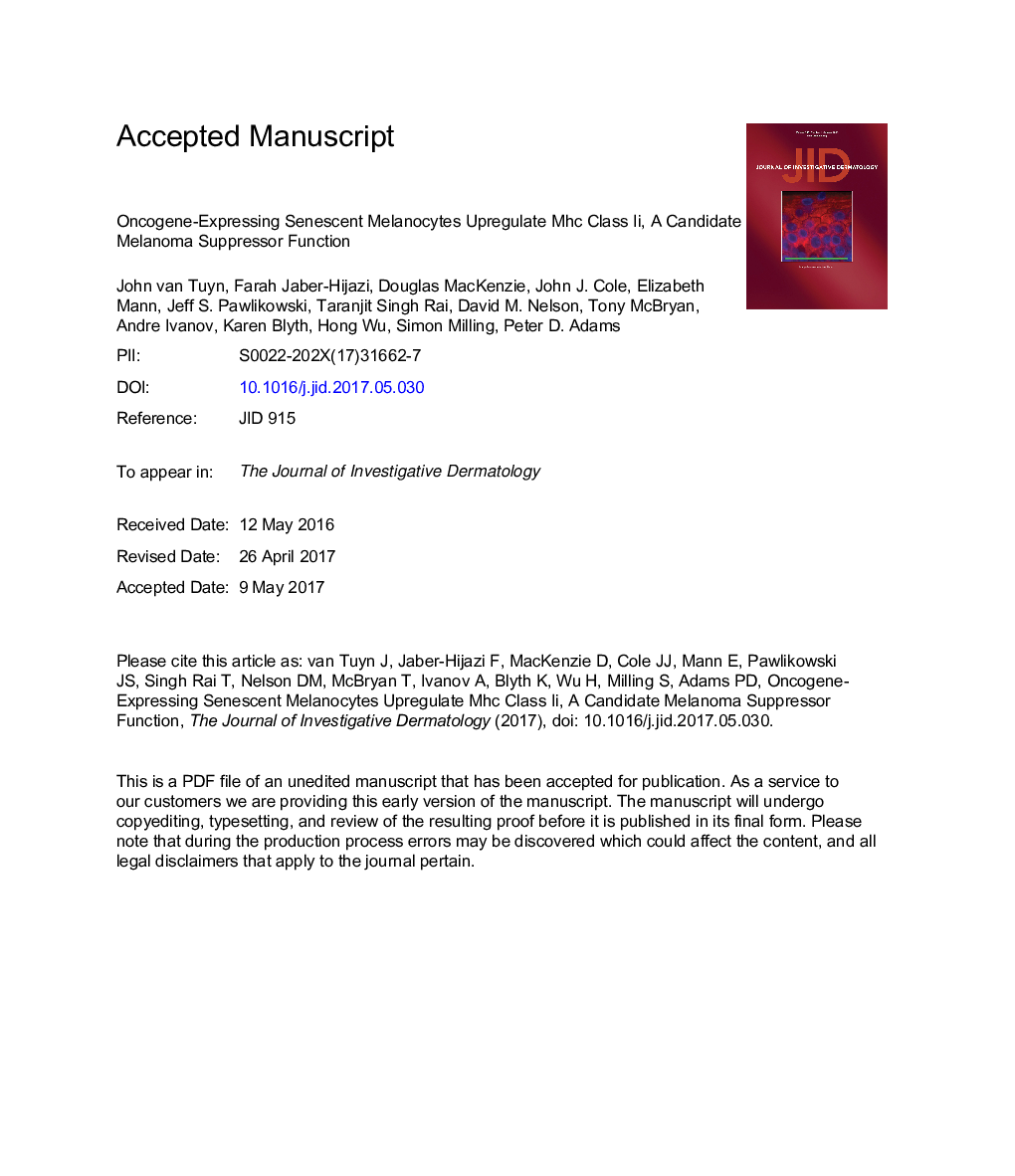| Article ID | Journal | Published Year | Pages | File Type |
|---|---|---|---|---|
| 8716352 | Journal of Investigative Dermatology | 2017 | 30 Pages |
Abstract
On acquisition of an oncogenic mutation, primary human and mouse cells can enter oncogene-induced senescence (OIS). OIS is characterized by a stable proliferation arrest and secretion of proinflammatory cytokines and chemokines, the senescence-associated secretory phenotype. Proliferation arrest and the senescence-associated secretory phenotype collaborate to enact tumor suppression, the former by blocking cell proliferation and the latter by recruiting immune cells to clear damaged cells. However, the interactions of OIS cells with the immune system are still poorly defined. Here, we show that engagement of OIS in primary human melanocytes, specifically by melanoma driver mutations NRASQ61K and BRAFV600E, causes expression of the major histocompatibility class II antigen presentation apparatus, via secreted IL-1à signaling and expression of CIITA, a master regulator of major histocompatibility class II gene transcription. In vitro, OIS melanocytes activate T-cell proliferation. In vivo, nonproliferating oncogene-expressing melanocytes localize to skin-draining lymph nodes, where they induce T-cell proliferation and an antigen presentation gene expression signature. In patients, expression of major histocompatibility class II in melanoma is linked to favorable disease outcome. We propose that OIS in melanocytes is accompanied by an antigen presentation phenotype, likely to promote tumor suppression via activation of the adaptive immune system.
Keywords
Related Topics
Health Sciences
Medicine and Dentistry
Dermatology
Authors
John van Tuyn, Farah Jaber-Hijazi, Douglas MacKenzie, John J. Cole, Elizabeth Mann, Jeff S. Pawlikowski, Taranjit Singh Rai, David M. Nelson, Tony McBryan, Andre Ivanov, Karen Blyth, Hong Wu, Simon Milling, Peter D. Adams,
